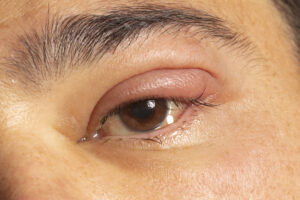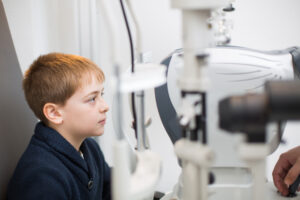Floaters are tiny, shadowy forms that float across your field of view. They may resemble dots, threads, squiggly lines, or even little cobwebs. Most individuals experience floaters, and most of the time, they do not need treatment, since they come and go.
However, sometimes floaters can indicate a more significant issue with the eye. Therefore, you must inform your eye doctor if you see new floaters that emerge unexpectedly and do not disappear over time.
Signs of floaters
The movement of your eyes causes floaters to move away from you whenever you try to gaze at them head-on. When your eyes are still, floaters will continue moving about in your field of vision.
Causes
Age-related eye alterations
The vitreous is a jelly-like material in your eye that is mainly composed of water, collagen (a kind of protein), and hyaluronan (a type of carbohydrate). In your eye, the vitreous humor fills the gap between the lens and the retina, assisting the eye in keeping its characteristic round shape.
As time passes, the vitreous becomes more liquid and shrinks; this causes it to draw away from the inner surface of the eyeball. Collagen fibers inside the vitreous begin to cluster together and thread themselves up when the vitreous undergoes alteration.
These fragments dispersed throughout the eye stop part of the light from reaching the retina. This causes tiny shadows on your retina, which you may see as floaters.
Damage to the retina
Tears in the retina can occur when the vitreous, contracting, pulls on the retina with enough force to tear it. A retinal tear can cause a retinal detachment if the condition is not treated. If fluid escapes from behind the rip, it has the potential to pull the retina away from the back of the eye. A retinal detachment is an emergency; if you have symptoms of a retinal detachment, seek emergency care. If a retinal detachment goes untreated, it can result in irreversible visual loss.
Posterior-Eye Inflammation
Uveitis occurs in the intermediate layer of tissue found in the eye’s wall (uvea). The retina and a layer of the eye known as the choroid may be affected by posterior uveitis, which is inflammation at the rear of the eye.
In the case of uveitis, floaters are produced in the vitreous due to inflammation. Infection, autoimmune disorders, and inflammatory illnesses are some of the factors that can lead to posterior uveitis.
Vascular Changes
Various conditions may lead to bleeding into the vitreous, including injuries, diabetes, high blood pressure (also known as hypertension), blocked blood vessels, and retinal tears and detachments.
Eye injections and surgery
Injections of some drugs into the vitreous may result in the formation of air bubbles in the vitreous. These bubbles will seem like shadows until your eye can fully absorb them. Floaters may also be caused by silicone oil bubbles that are injected into the vitreous and retinal tissue during some surgical procedures.








